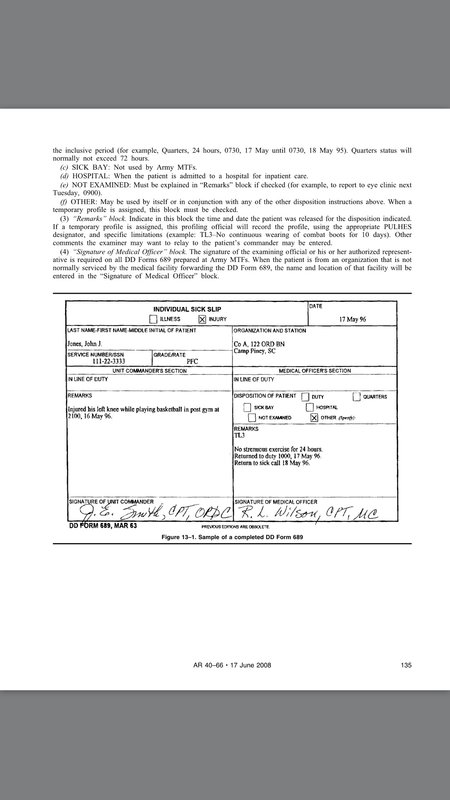Quarters Army Regulation : What it is
Quarters Army Regulation: What It Is In the United States Army, the concept of quarters refers to designated living spaces for personnel. Quarters can serve various purposes, including where soldiers reside or work. The Army has specific regulations and rules in place regarding in-sick quarters and other aspects of quarters management. In this post, we will delve into the details of these regulations, exploring what they entail and why they are important. Whether you are a soldier seeking information or simply curious about military life, this guide will provide you with valuable insights. Understanding In-Sick Quarters Regulations In-sick quarters, often referred to as ISQ, is an essential aspect of healthcare management within the Army. When soldiers fall ill or sustain injuries that prevent them from performing their duties, they are placed in ISQ for the duration of their recovery. This section will outline the regulations and rules that govern ISQ and shed light on the processes involved. 1. Ensuring Adequate Rest and Recovery for Soldiers - Image: An illustration of a soldier resting in a cozy quarter, featuring a comfortable bed and necessary amenities. - Heading: Providing a Restorative Environment [Image description: A soldier enjoying rest and recovery in a cozy quarter.] Soldiers recovering in ISQ are entitled to a restorative environment that allows them to heal properly. The Army regulation mandates that ISQs provide comfortable beds, appropriate lighting, and adequate ventilation to ensure the well-being of the personnel. Additionally, the quarters should be equipped with essential amenities, such as private bathroom facilities, to ensure the utmost privacy. - Paragraph: Meeting the physical and emotional needs of soldiers in ISQ is crucial for their recovery and overall well-being. A comfortable bed provides the necessary support for proper rest, allowing the body to heal faster. Adequate lighting is essential to create a soothing environment and promote relaxation. Furthermore, well-ventilated quarters help maintain a fresh and clean atmosphere, which is vital for a healthy recovery. 2. Supervision and Monitoring for Prompt Medical Attention - Image: A healthcare professional checking the temperature of a soldier in ISQ, ensuring accurate monitoring of vital signs. - Heading: Ensuring Effective Supervision [Image description: A healthcare professional monitoring a soldier's vital signs.] Accurate and regular monitoring of the soldiers' health conditions is crucial during their time in ISQ. Army regulations mandate that healthcare professionals regularly check on the patients, ensuring any complications are promptly identified and treated. This proactive approach guarantees that soldiers receive the necessary medical attention and minimizes the risk of any unforeseen deterioration. - Paragraph: The supervision and monitoring of soldiers in ISQ play a vital role in ensuring their well-being. By regularly checking vital signs, healthcare professionals can detect any potential issues early on, allowing for prompt intervention and preventing the escalation of medical conditions. An effective monitoring system also provides peace of mind to the soldiers, knowing they are under the watchful eye of trained medical personnel. 3. Facilitating Communication and Support for Soldiers - Image: Two soldiers having a conversation in an ISQ common area, creating a supportive and encouraging environment. - Heading: Fostering Communication and Support [Image description: Two soldiers engaged in a supportive conversation in an ISQ common area.] Army regulations recognize the importance of emotional support and connectivity during a soldier's recovery. ISQs are designed to have common areas where individuals can interact, fostering a sense of camaraderie and support amongst the soldiers. These spaces provide an opportunity to share experiences, exchange advice, and uplift one another, creating a supportive network that aids in the healing process. - Paragraph: Recovery periods can be emotionally challenging for soldiers. Being in ISQ often means being away from their usual environment and separated from their comrades. To mitigate feelings of isolation, common areas within ISQs are created to encourage socialization. These spaces offer soldiers an opportunity to connect with others facing similar situations and share their experiences. This camaraderie provides a vital support system, fostering a sense of unity and resilience. FAQs About Army Quarters and Regulations 1. Are soldiers allowed to decorate their quarters? - Paragraph: Soldiers are encouraged to personalize their quarters within the guidelines specified in the Army regulations. While each soldier has the freedom to add personal touches, it is important to ensure that the decorations and modifications are not disruptive or pose any safety hazards. 2. Can soldiers request a change of quarters? - Paragraph: Requesting a change of quarters is possible under certain circumstances. However, such requests are subject to approval, and various factors, including availability and rank, are taken into consideration. Soldiers must follow the proper channels and adhere to the specified procedures for requesting a change in quarters. 3. How long can soldiers stay in ISQ? - Paragraph: The duration of a soldier's stay in ISQ depends on their medical condition and the guidance provided by healthcare professionals. Soldiers will remain in ISQ until they recover sufficiently to return to duty. The medical team closely monitors their progress and assesses when it is deemed safe and appropriate for them to resume their duties. Conclusion Army quarters and regulations, including those governing in-sick quarters, are essential for ensuring the well-being and effective recovery of soldiers. By providing a restorative environment, enabling effective supervision, and fostering communication and support, the Army prioritizes the physical and emotional needs of its personnel. Understanding the regulations and rules surrounding Army quarters not only benefits soldiers but also promotes a greater understanding of the culture and values within the military community.  Image Source : armymilitary.net
Image Source : armymilitary.net  Image Source : www.rallypoint.com
Image Source : www.rallypoint.com  Image Source : www.getty.edu
Image Source : www.getty.edu  Image Source : picryl.com
Image Source : picryl.com  Image Source : formspal.com
Image Source : formspal.com  Image Source : www.rallypoint.com
Image Source : www.rallypoint.com  Image Source : www.rallypoint.com
Image Source : www.rallypoint.com  Image Source : armymilitary.net
Image Source : armymilitary.net
Sick In Quarters Army Regulation - Army Military
 Image Source : armymilitary.net
Image Source : armymilitary.net What Is/are The Regulation/rules For In-sick Quarters? What Are Things
 Image Source : www.rallypoint.com
Image Source : www.rallypoint.com quarters regulation sick luck soldiers rules ve looking had things been ago posted
Commissary Department, Head-Quarters Army Of The Potomac (The J. Paul
 Image Source : www.getty.edu
Image Source : www.getty.edu Head-quarters, Army Of The Potomac. Warrenton, Va., November 9, 1862
 Image Source : picryl.com
Image Source : picryl.com Army Strip Map Fillable ≡ Fill Out Printable PDF Forms Online
 Image Source : formspal.com
Image Source : formspal.com What Is/are The Regulation/rules For In-sick Quarters? What Are Things
 Image Source : www.rallypoint.com
Image Source : www.rallypoint.com quarters regulation soldiers
What Is/are The Regulation/rules For In-sick Quarters? What Are Things
 Image Source : www.rallypoint.com
Image Source : www.rallypoint.com sick quarters regulation soldiers luck rules ve looking had things been ar
Sick In Quarters Army Regulation - Army Military
 Image Source : armymilitary.net
Image Source : armymilitary.net What is/are the regulation/rules for in-sick quarters? what are things. Quarters regulation sick luck soldiers rules ve looking had things been ago posted. Head-quarters, army of the potomac. warrenton, va., november 9, 1862. Sick in quarters army regulation. What is/are the regulation/rules for in-sick quarters? what are things